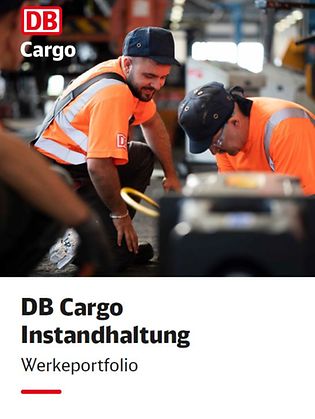Maintenance: good care makes all the difference
In 11 plants, 15 field offices and 58 mobile teams, DB Cargo AG's maintenance division offers the largest maintenance network in Germany for operational and scheduled maintenance as well as overhauls for locomotives and freight wagons.
The freight wagon doctor will see you now
Freight wagons are a stable bunch. Vehicles like them can last for 30 to 40 years. Of course, that’s only possible with the proper maintenance. And that’s the job of Sebastian Schauerte, head of the freight wagon depot at Gremberg, and his 98 employees. They maintain and repair around 36 freight wagons every day, which comes out to 9,000 per year.
Despite the wagons’ fundamentally robust design, it doesn’t do their partitions and sliding doors a bit of good to be moved around by forklift. Wagons are also frequently damaged when they transport scrap. “It’s bad for the wagons if a big magnet or an excavator shovel falls on top of them once or twice from above to try to make enough room to fit in maybe one more half tonne of scrap”, says Schauerte.
When that happens, his industrial mechanics and welders need to step in to straighten the wagons’ metal plates, which can be up to 10 mm thick. But they work most often on wheels and brakes, which are the wearing parts of freight wagons. “Brake shoes and wheelsets are swapped out in a timely fashion as a precaution to prevent them from potentially becoming a safety issue”, Schauerte explains. Sometimes trains brake too heavily and the wheels lock up. That causes flat areas to develop on the wheels, which pound onto the tracks. “This does quite a bit of damage to the tracks. But in rail transport, wheelsets are supposed to wear, because you can replace them more quickly than rails”, Schauerte adds. The damaged wheels can usually be repaired; a wheel lathe ensures that they are made perfectly round again.
Keeping close track
Regular reviews are conducted to ensure the freight wagon doctors are working properly. DB Cargo performs audits, for instance. External customers also send their inspectors by every one to three years. Last but not least, the German Federal Railway Authority also audits four DB Cargo maintenance depots a week, so every depot is thoroughly scrutinised about every three years.
When damaged freight wagons cannot make it to the depot by themselves, the doctors even make “house calls”. One of 58 mobile teams throughout Germany drives to a railway station or a customer’s loading yard and solves the problem right there. See the next page to learn more about how teams like this work.
DB Cargo has roughly 200 different types of freight wagons in operation. To ensure that they always run safely, they undergo maintenance at regular intervals at maintenance depots like the one in Cologne-Gremberg.
Maintenance facts and figures
DB Cargo goes to considerable effort and expense to ensure that its vehicles are safe and operational.
- Eleven DB Cargo maintenance depots throughout Germany, another 15 satellite depots, 58 mobile teams for freight wagons and locomotives.
- 2,300 employees working throughout Germany in two or three shifts.
- Approximately ten professions and jobs: industrial mechanics (metal workers), construction mechanics, welders, wagon inspectors, electronics engineers, mechatronics engineers, warehouse logistics specialists and engineers.
